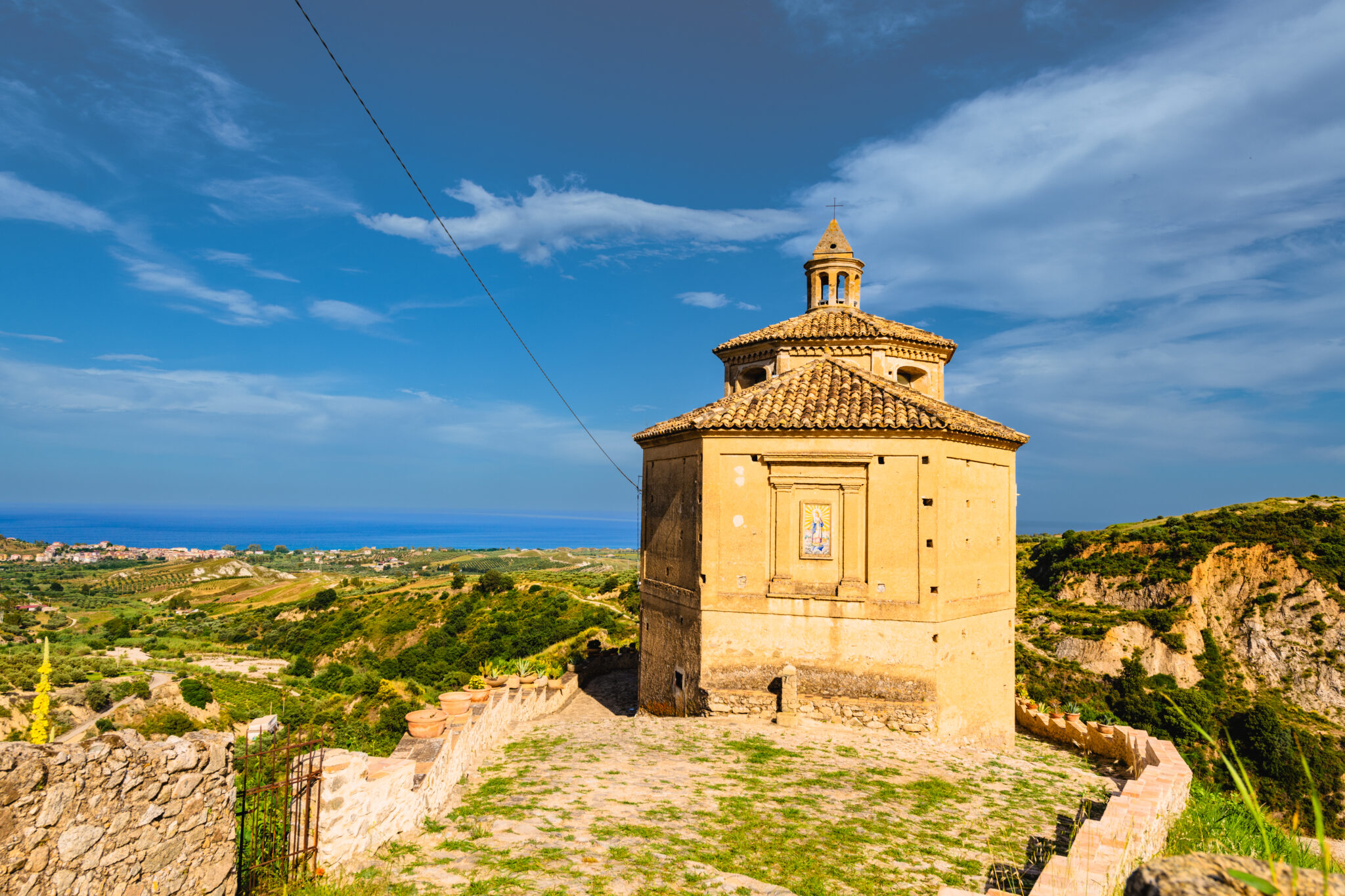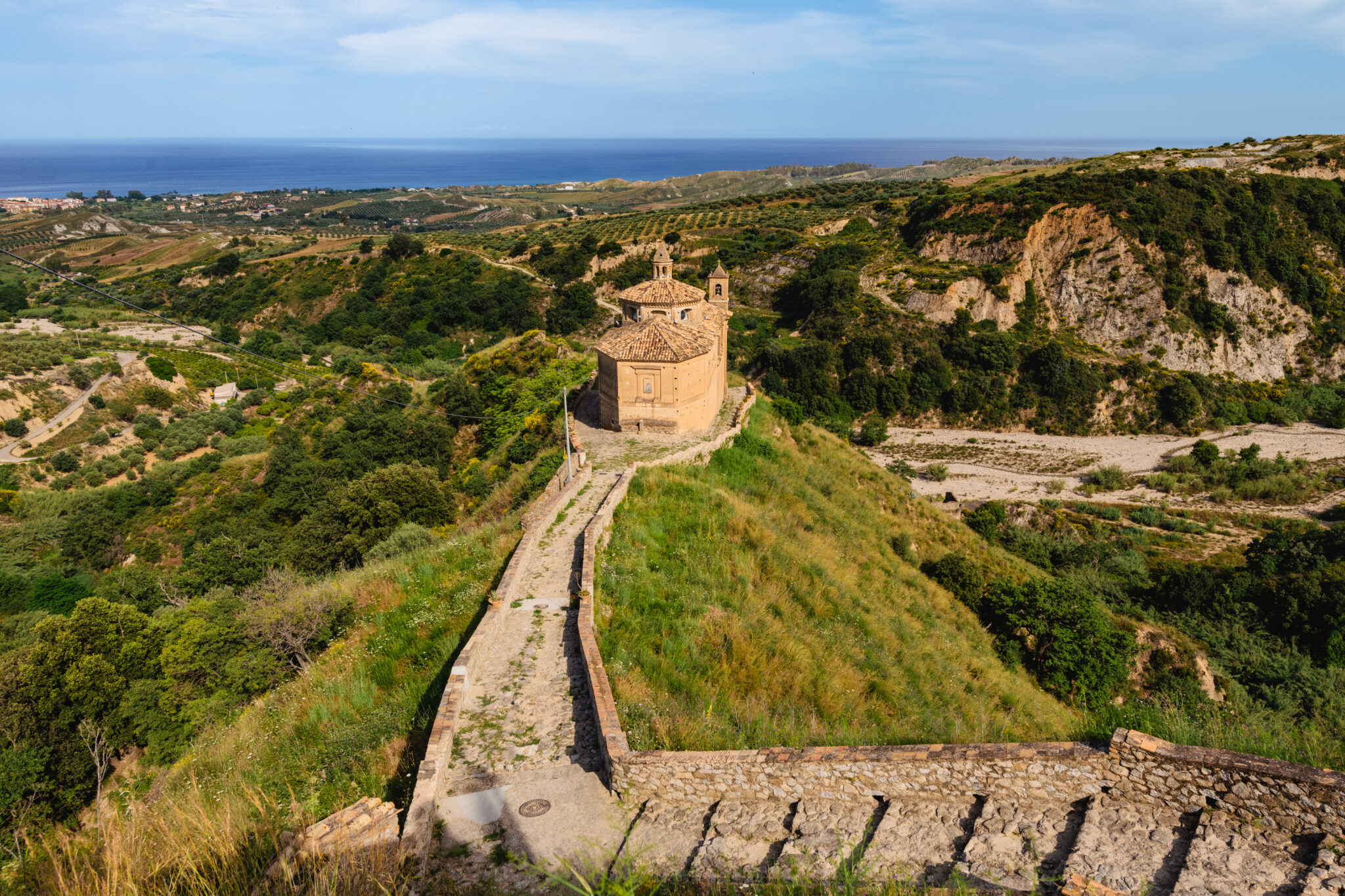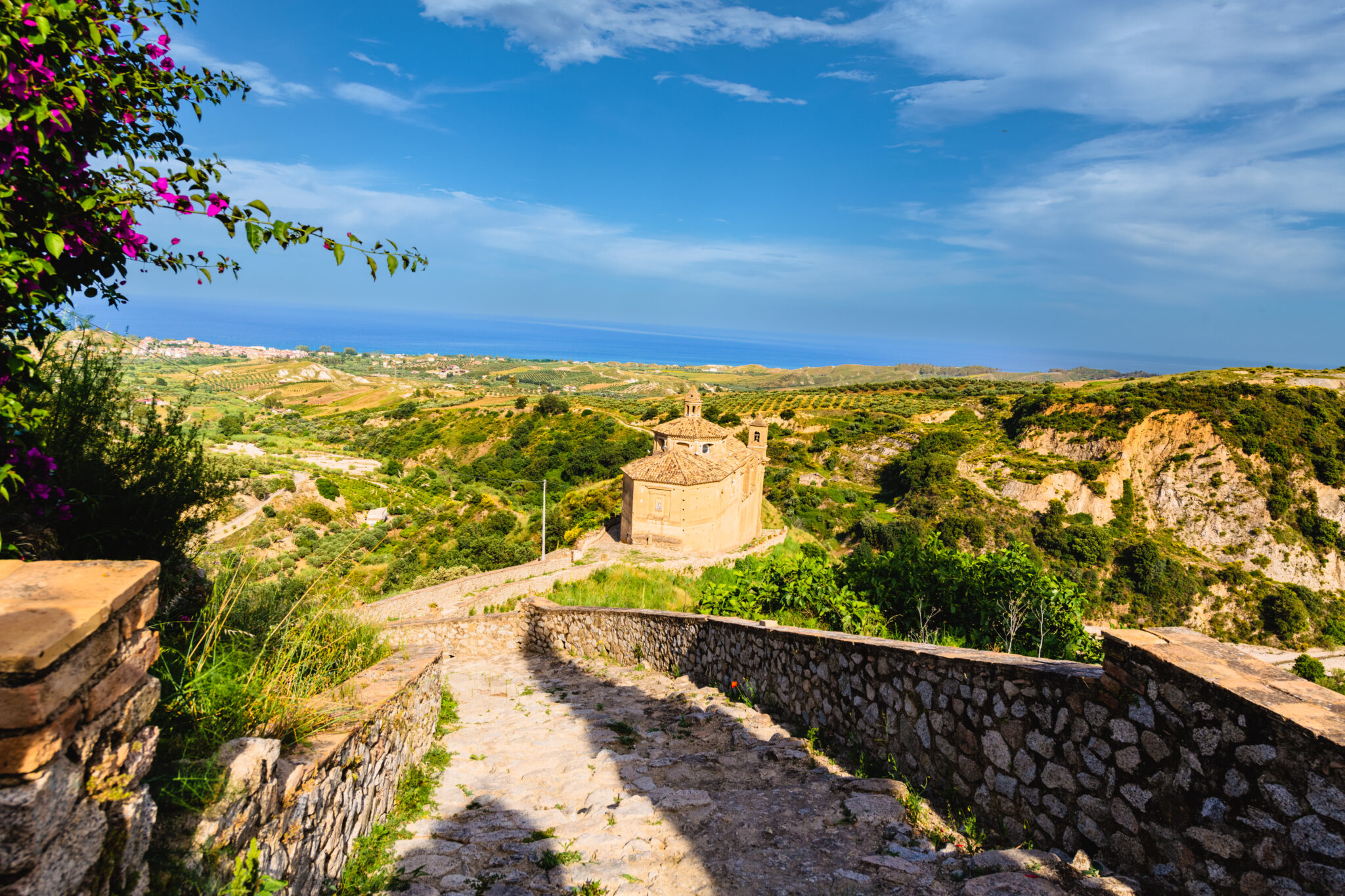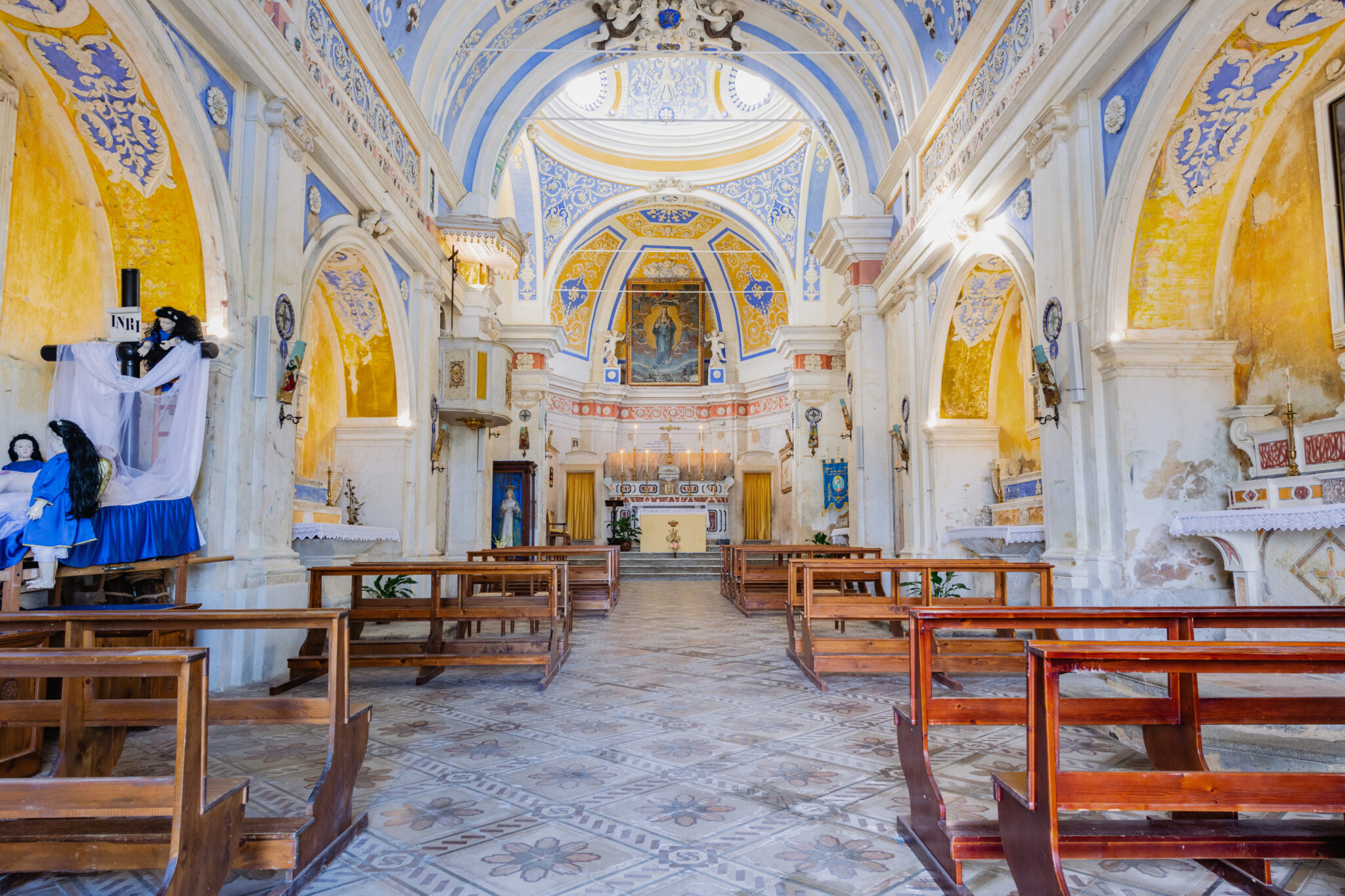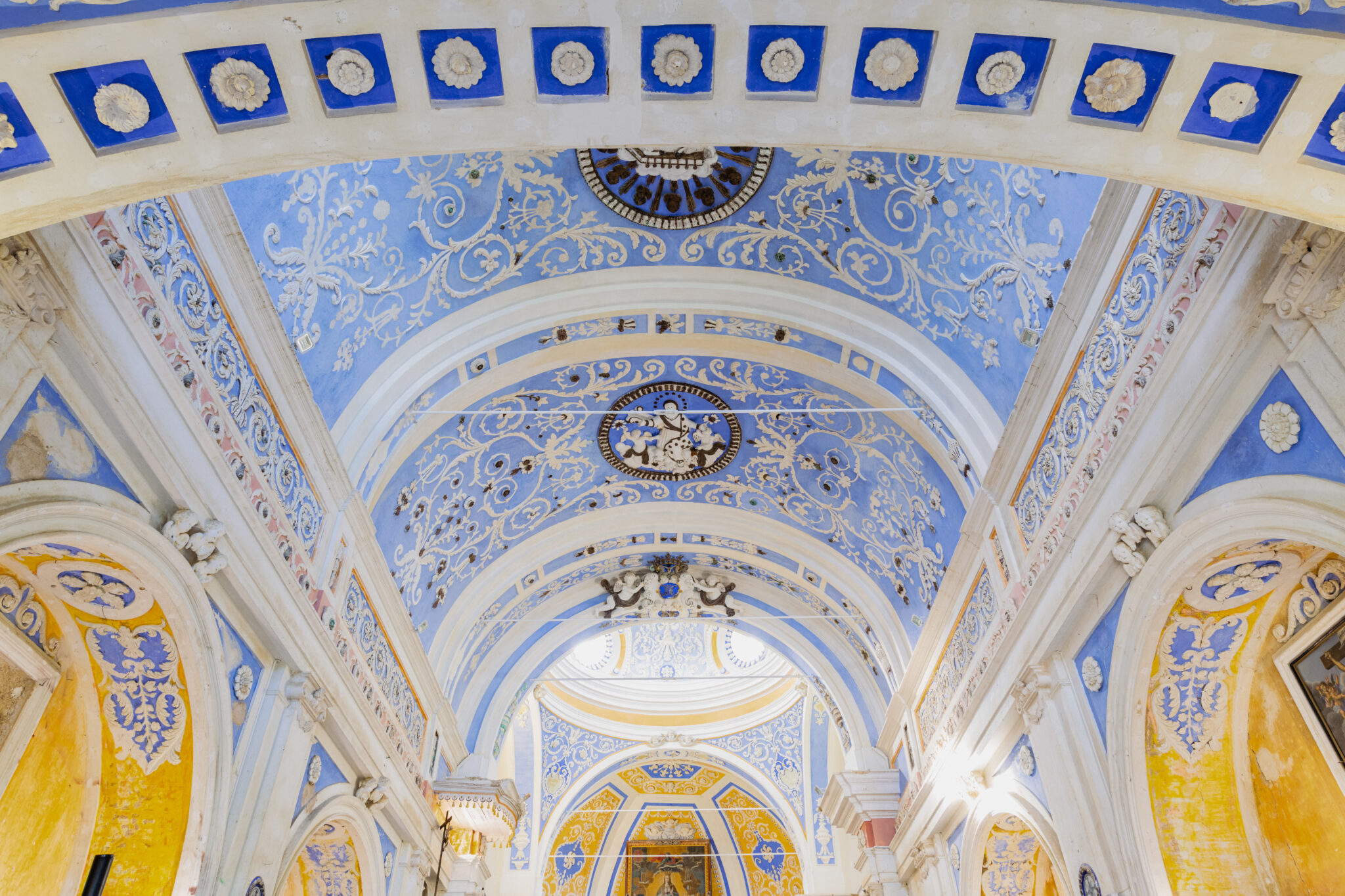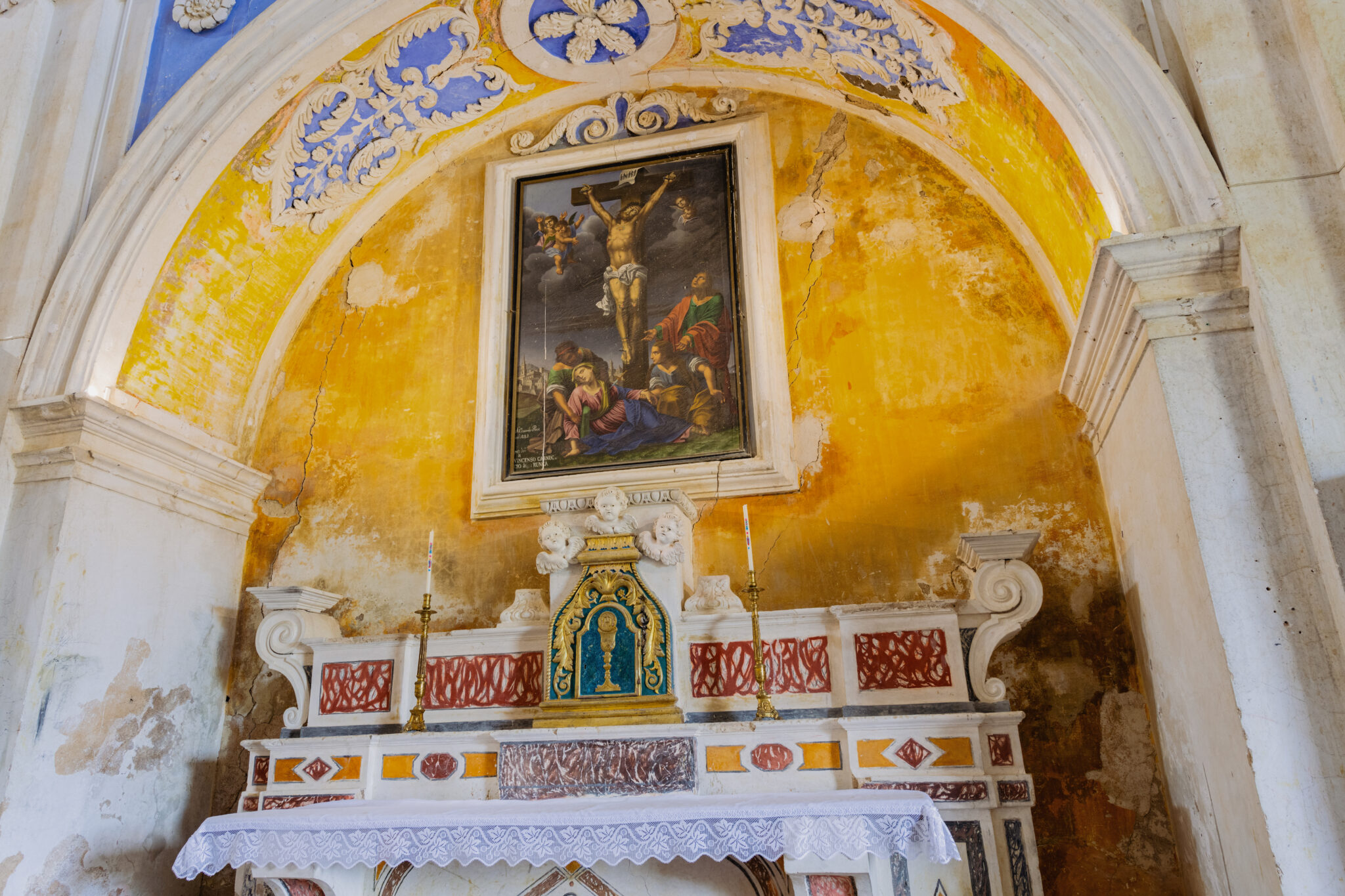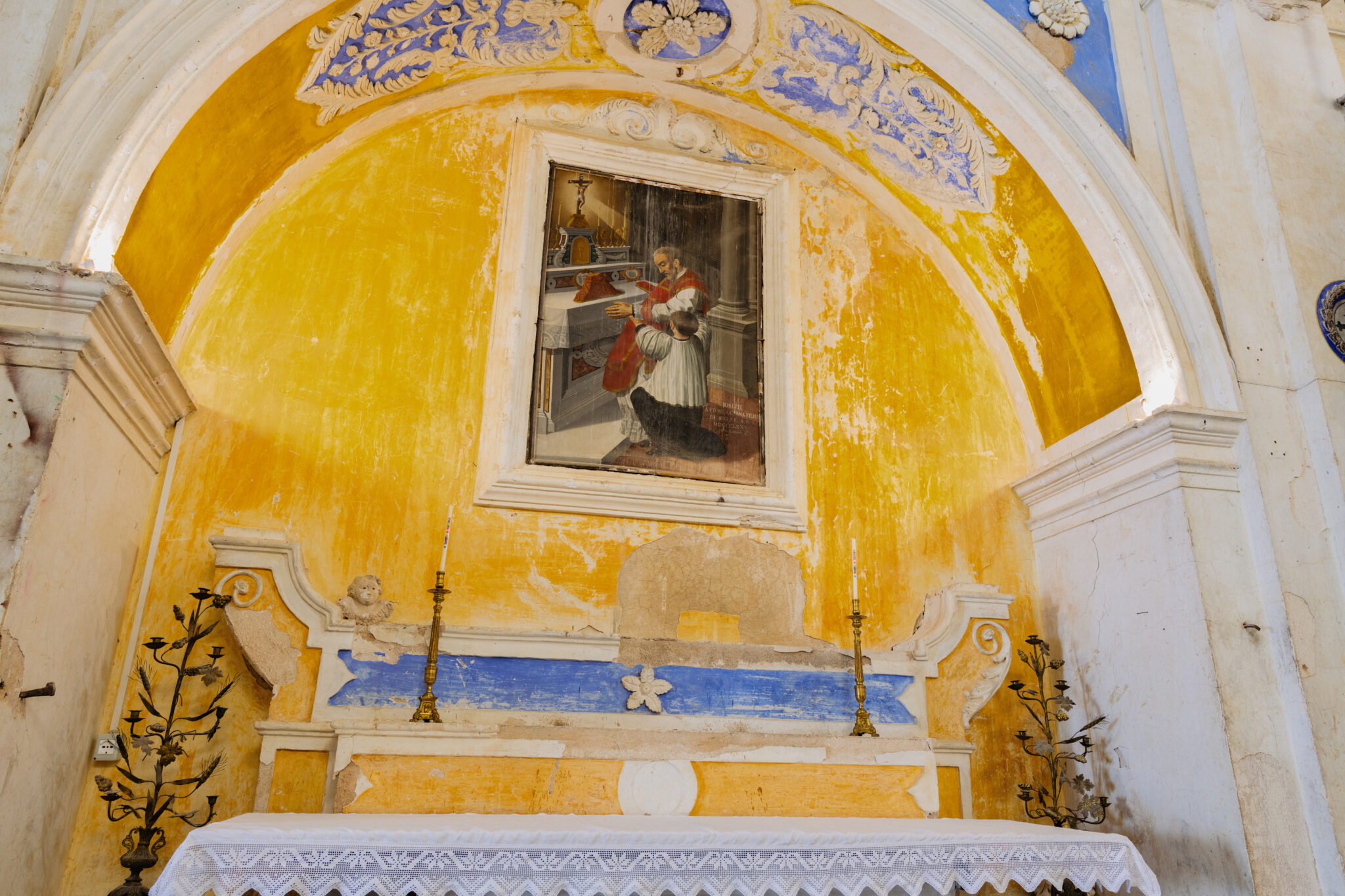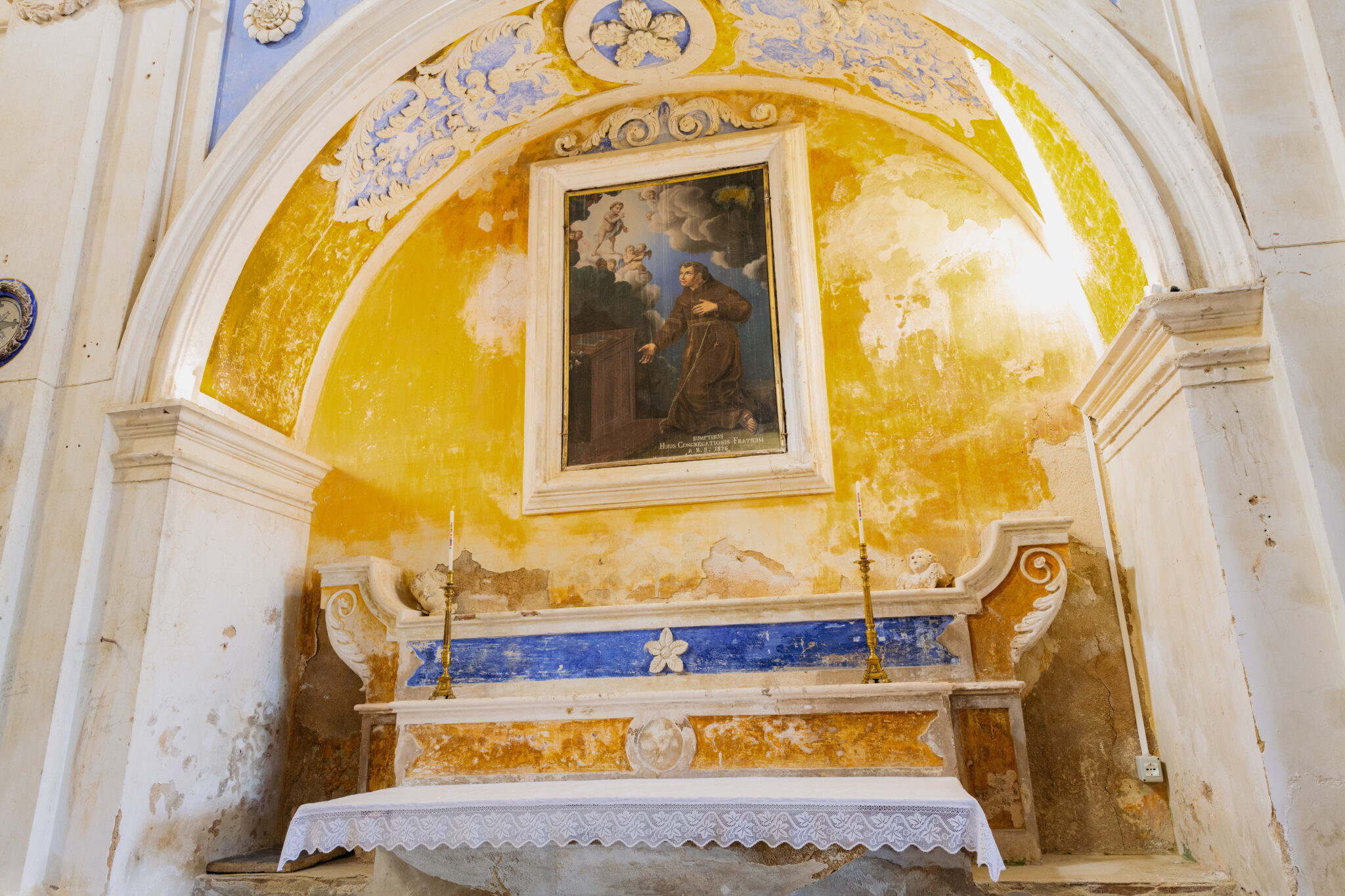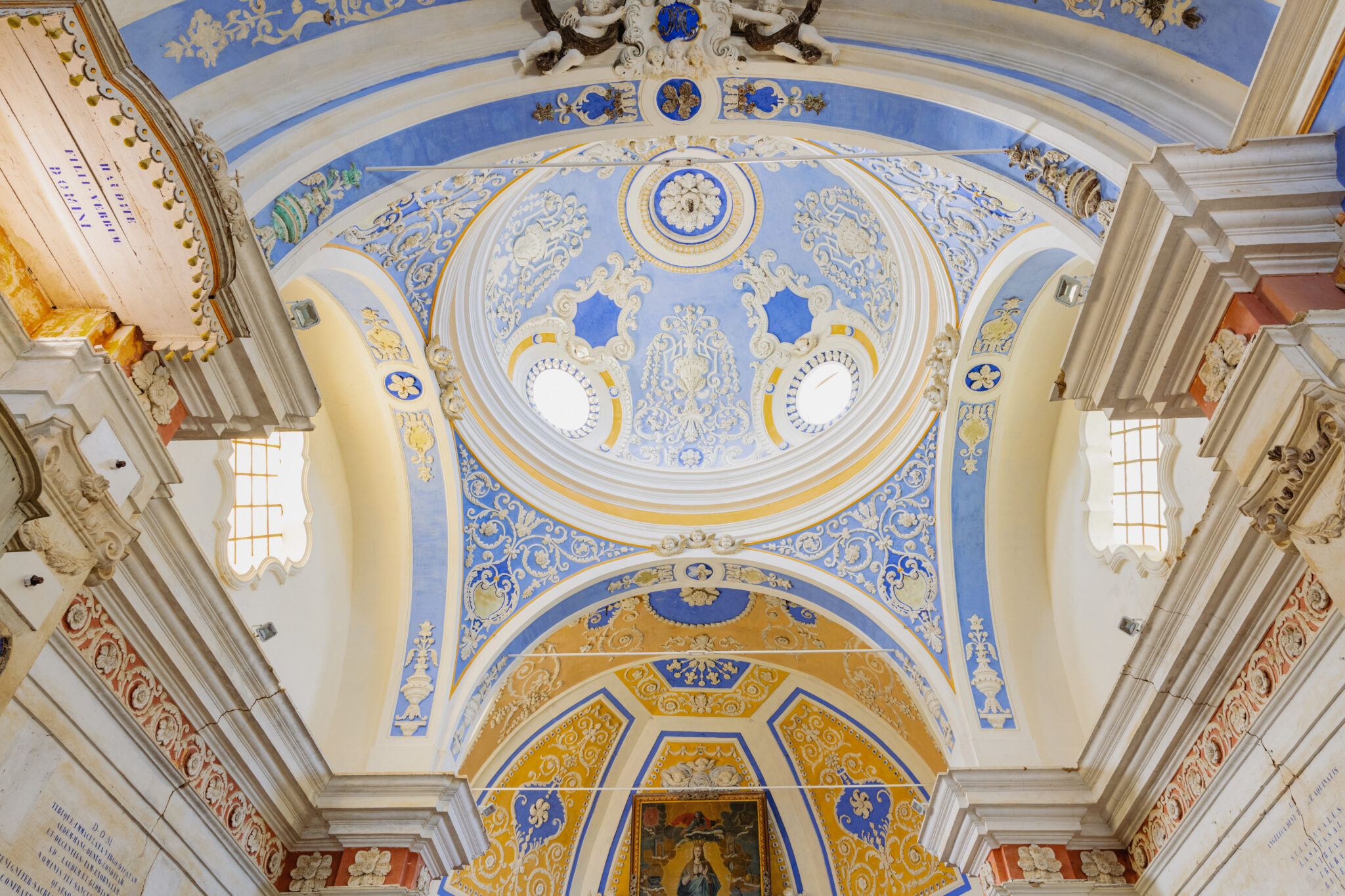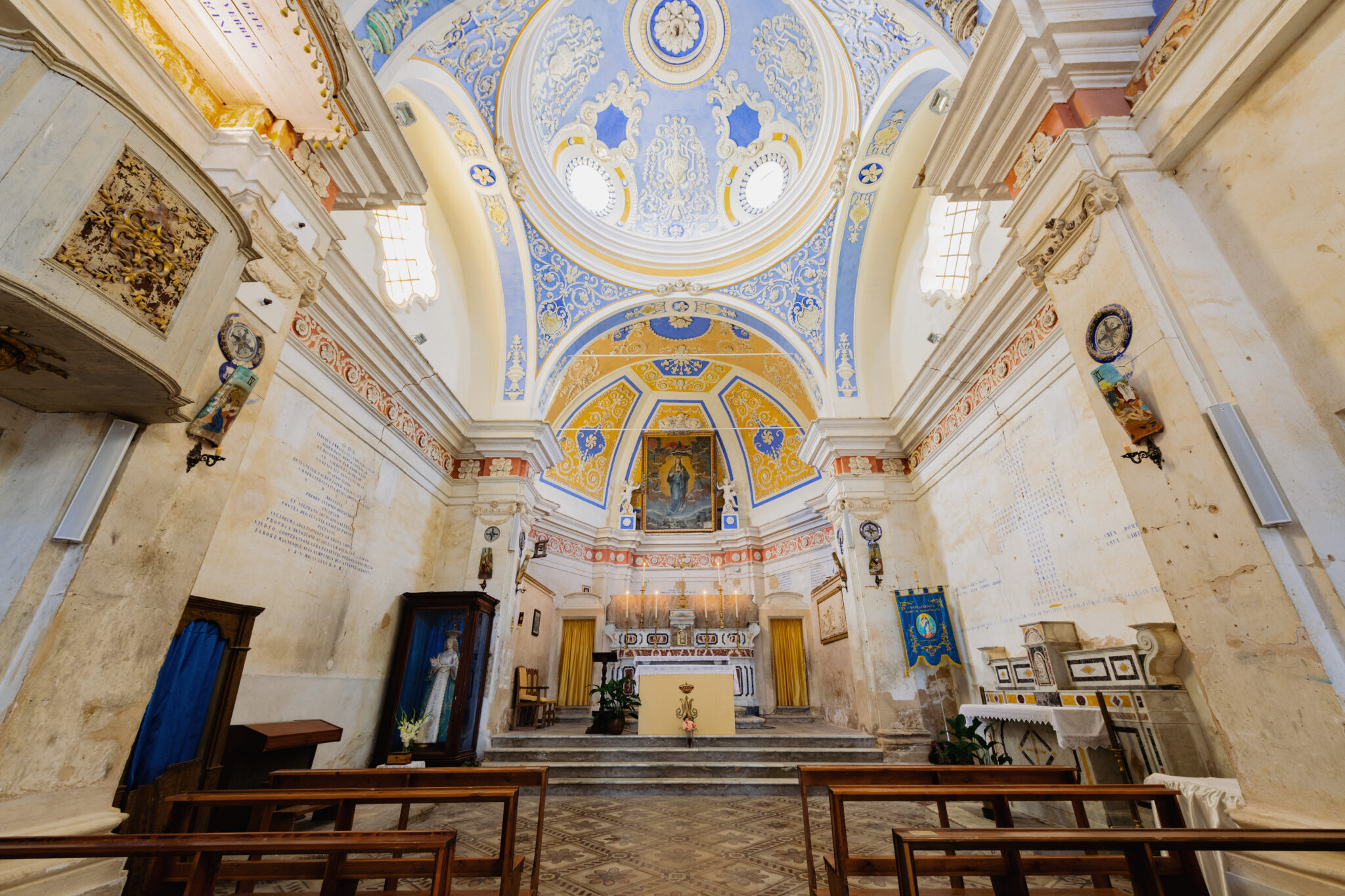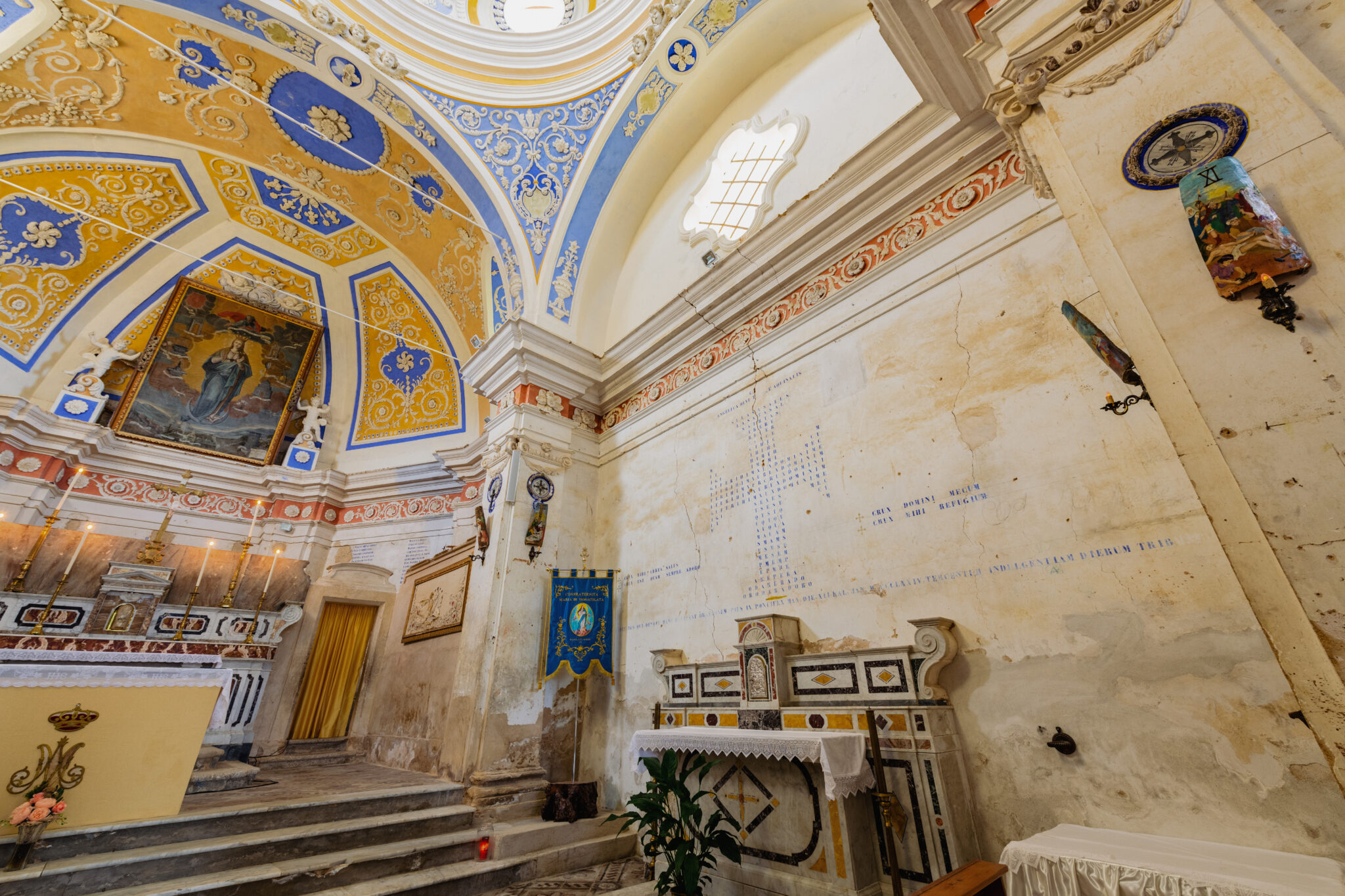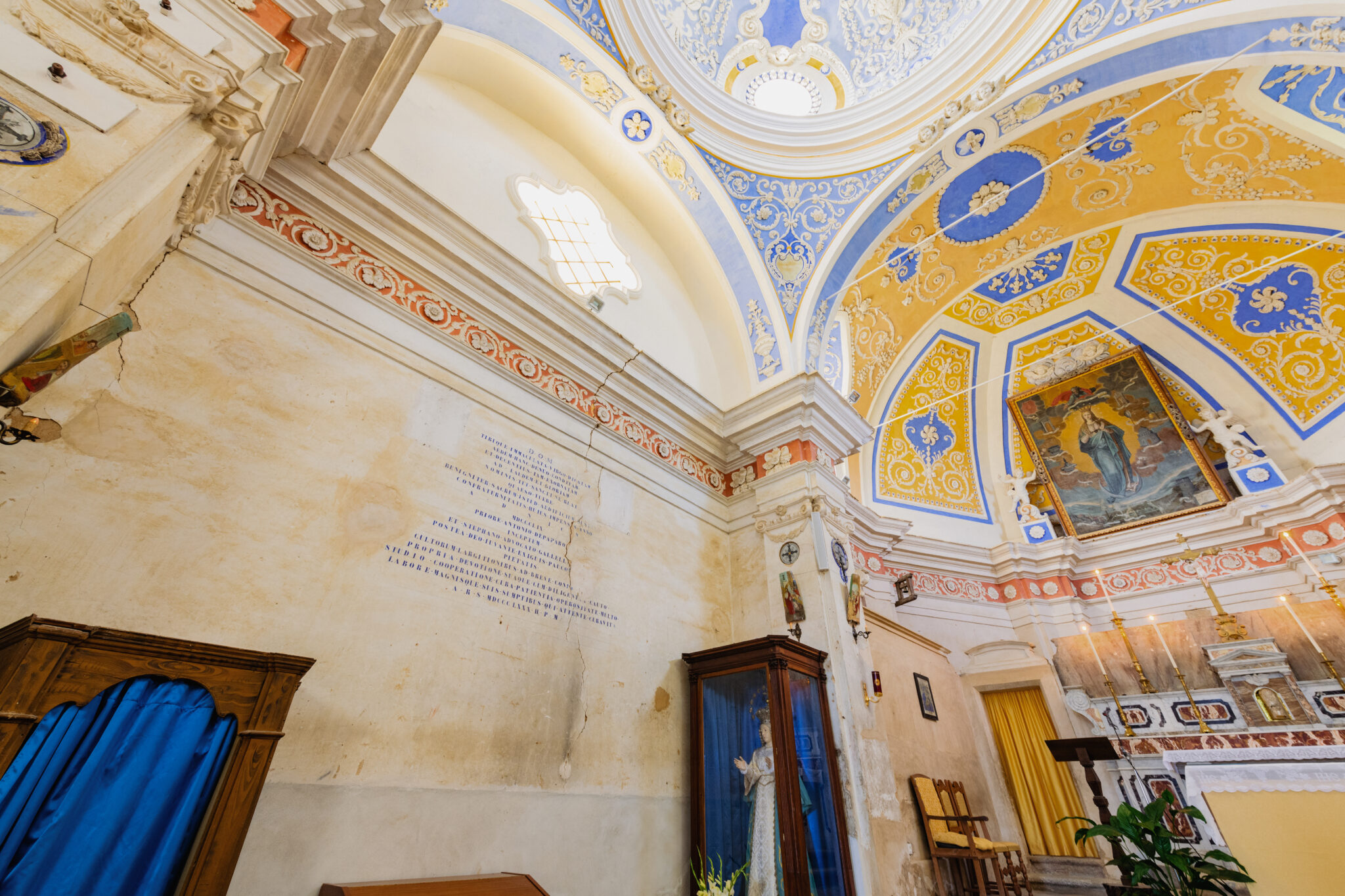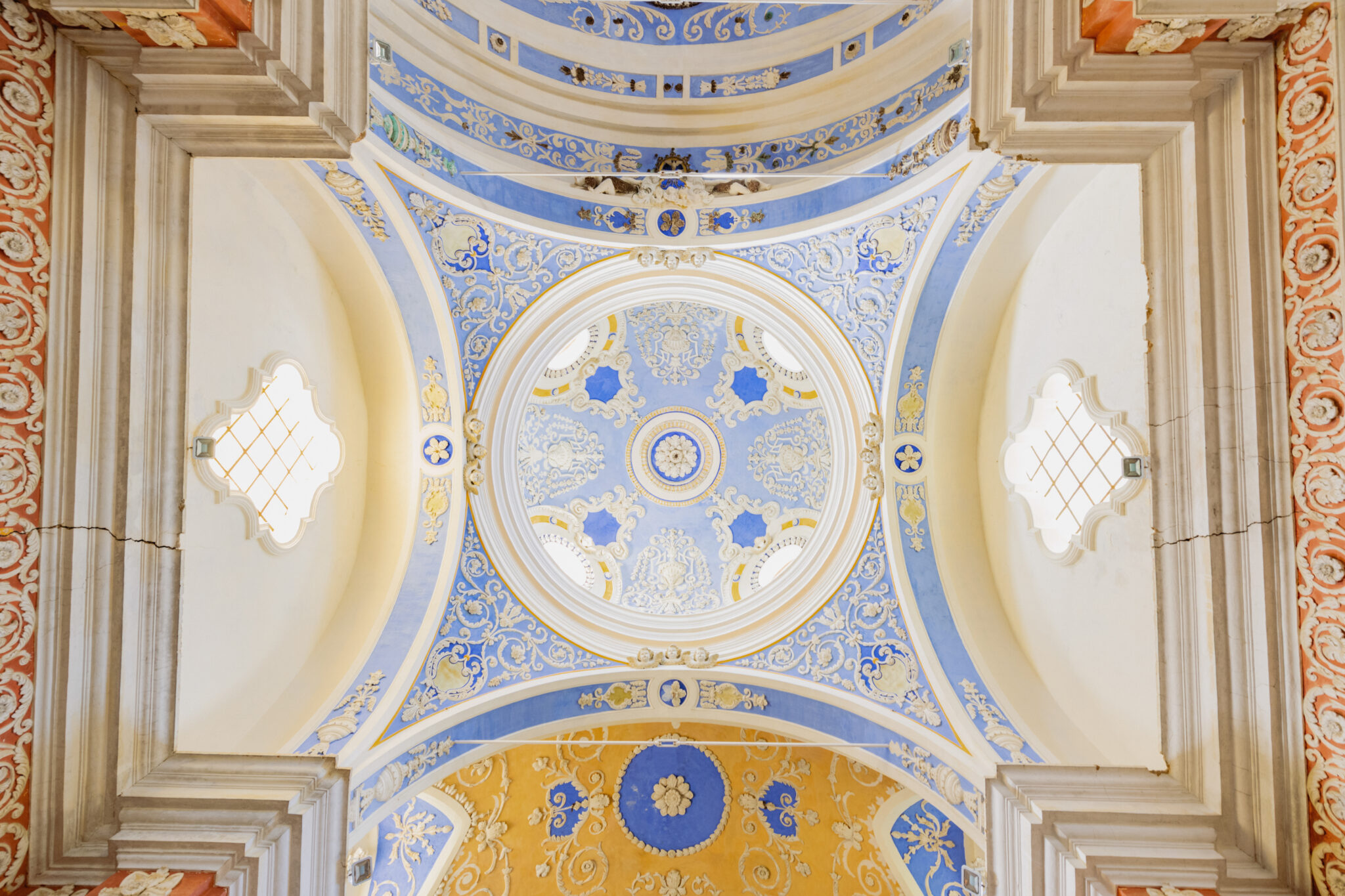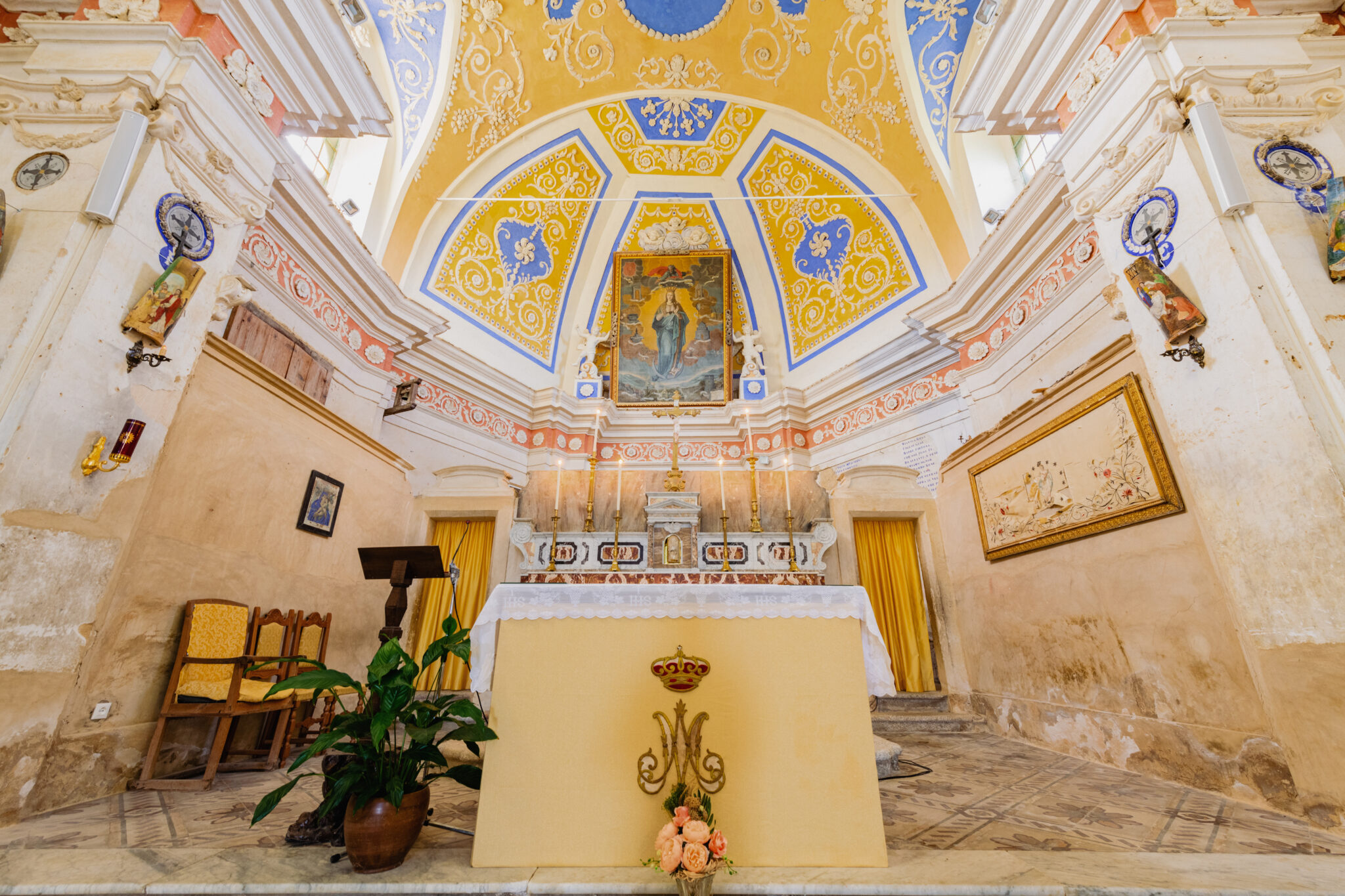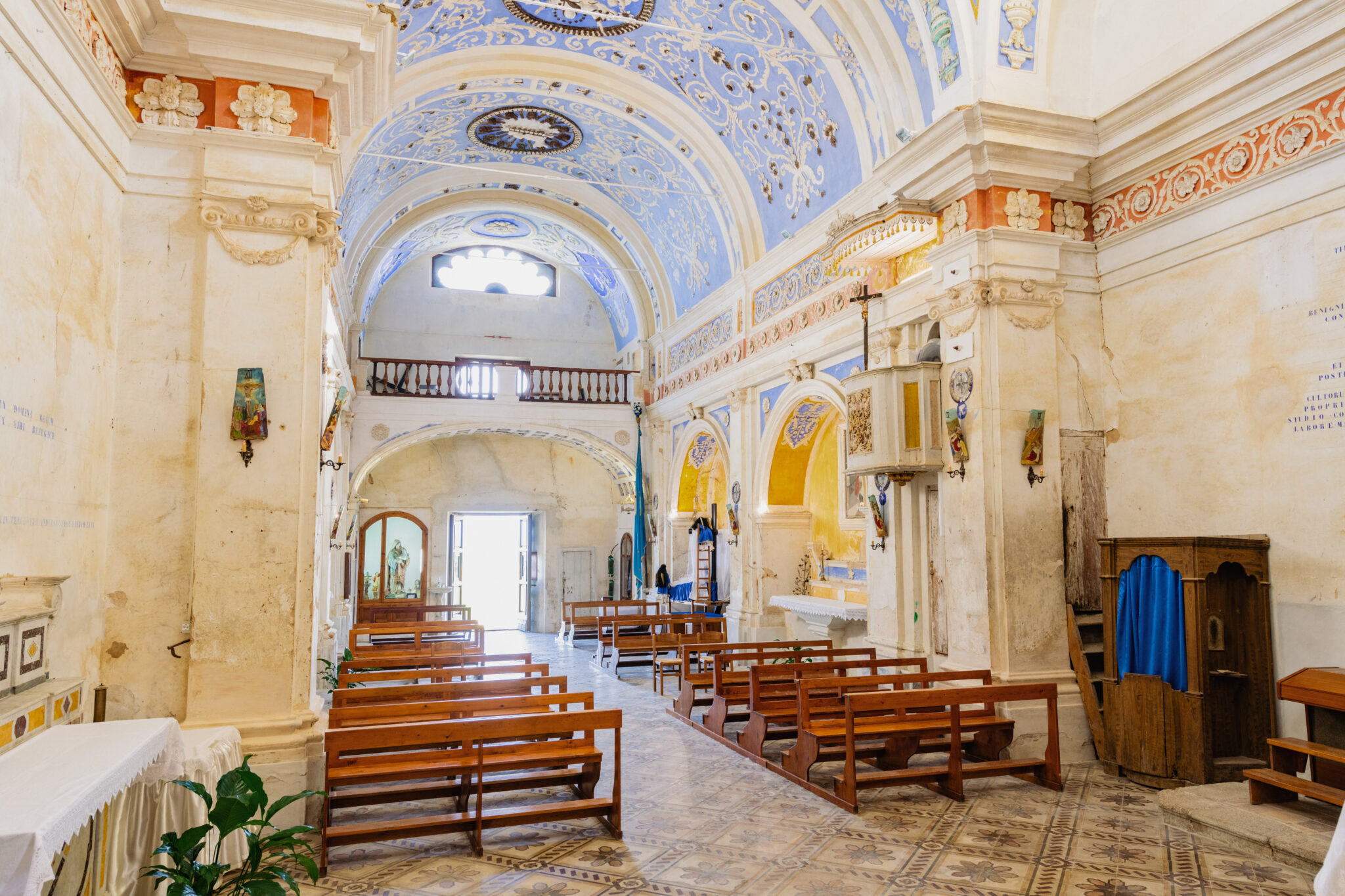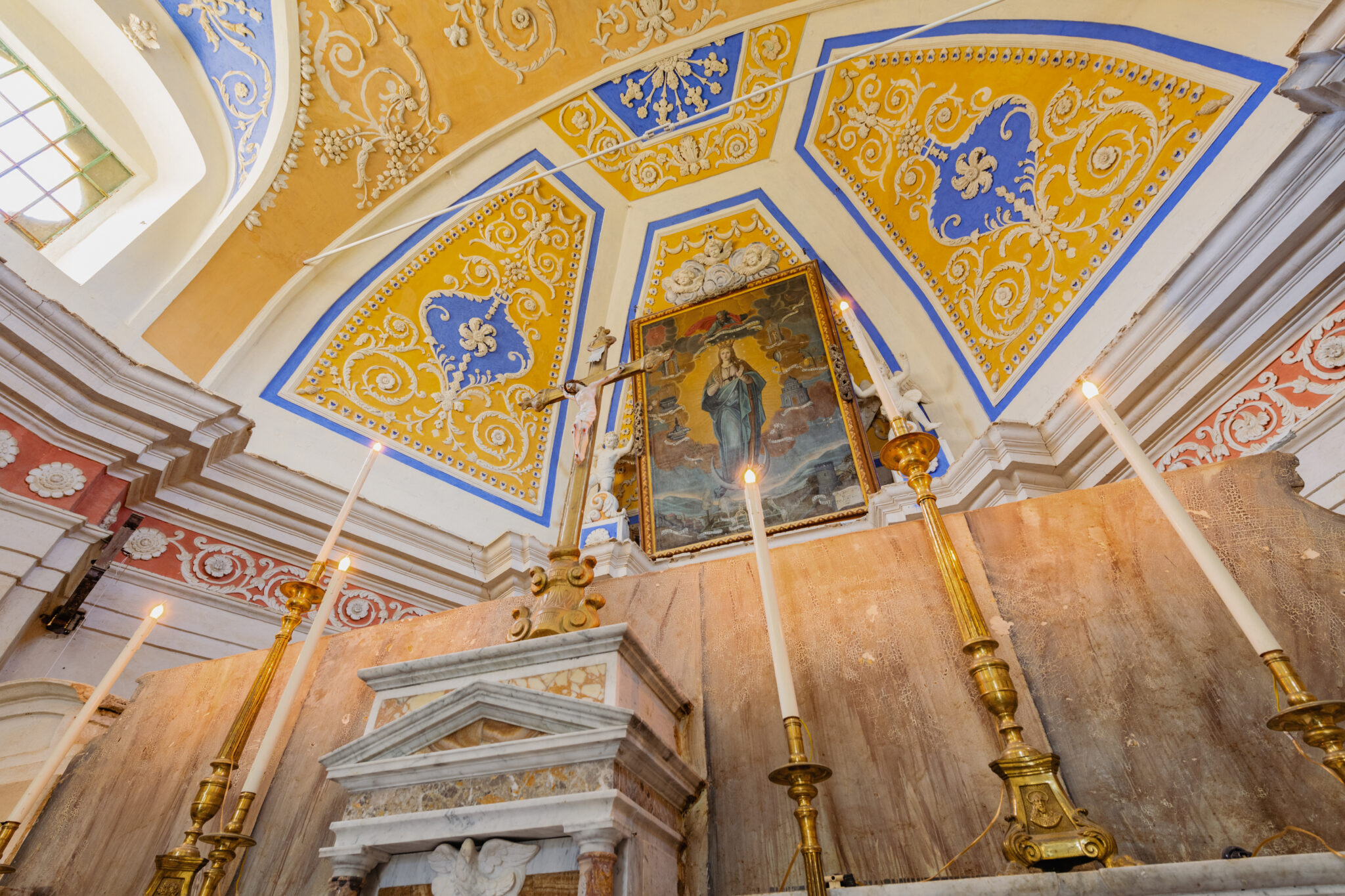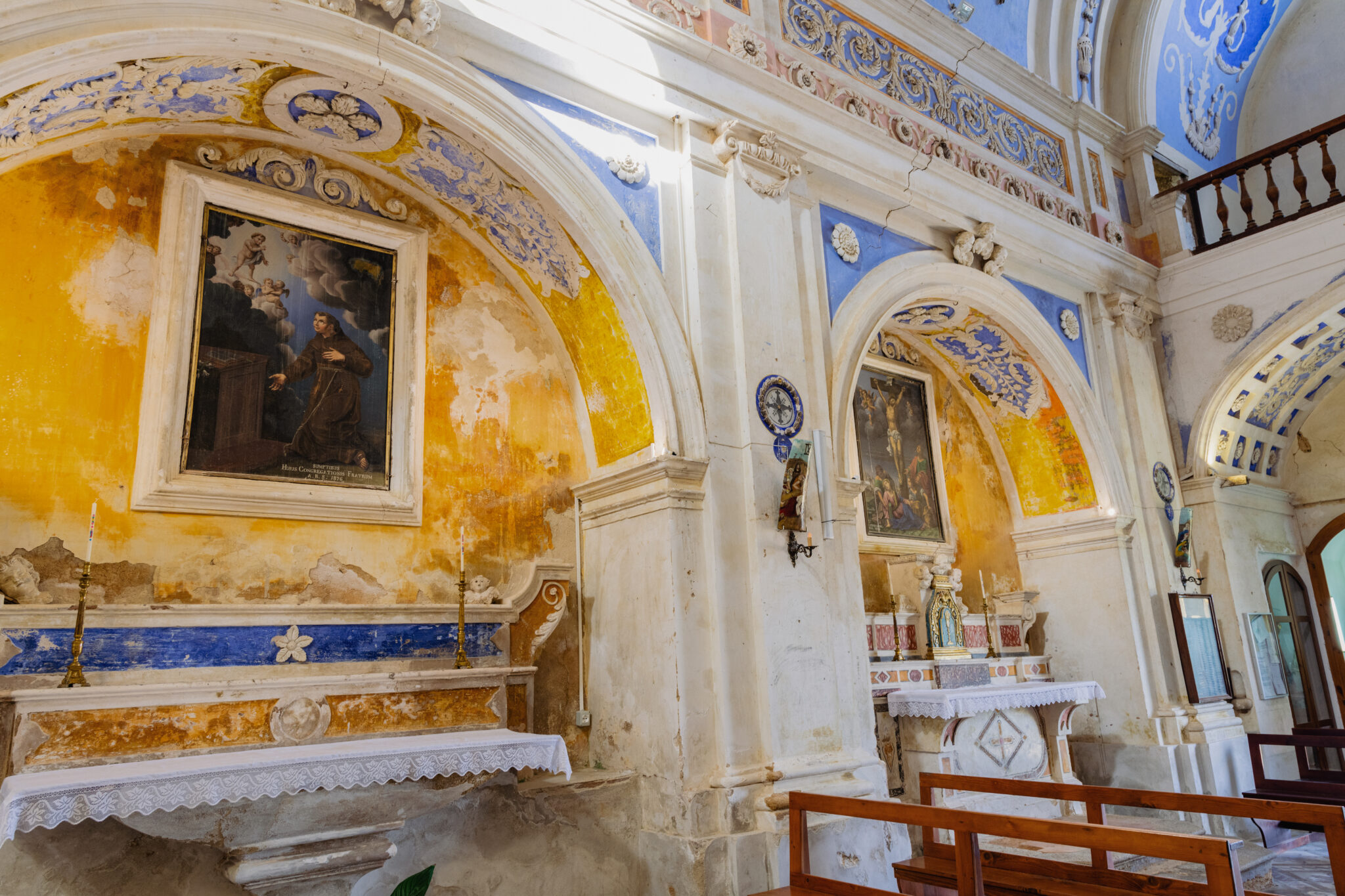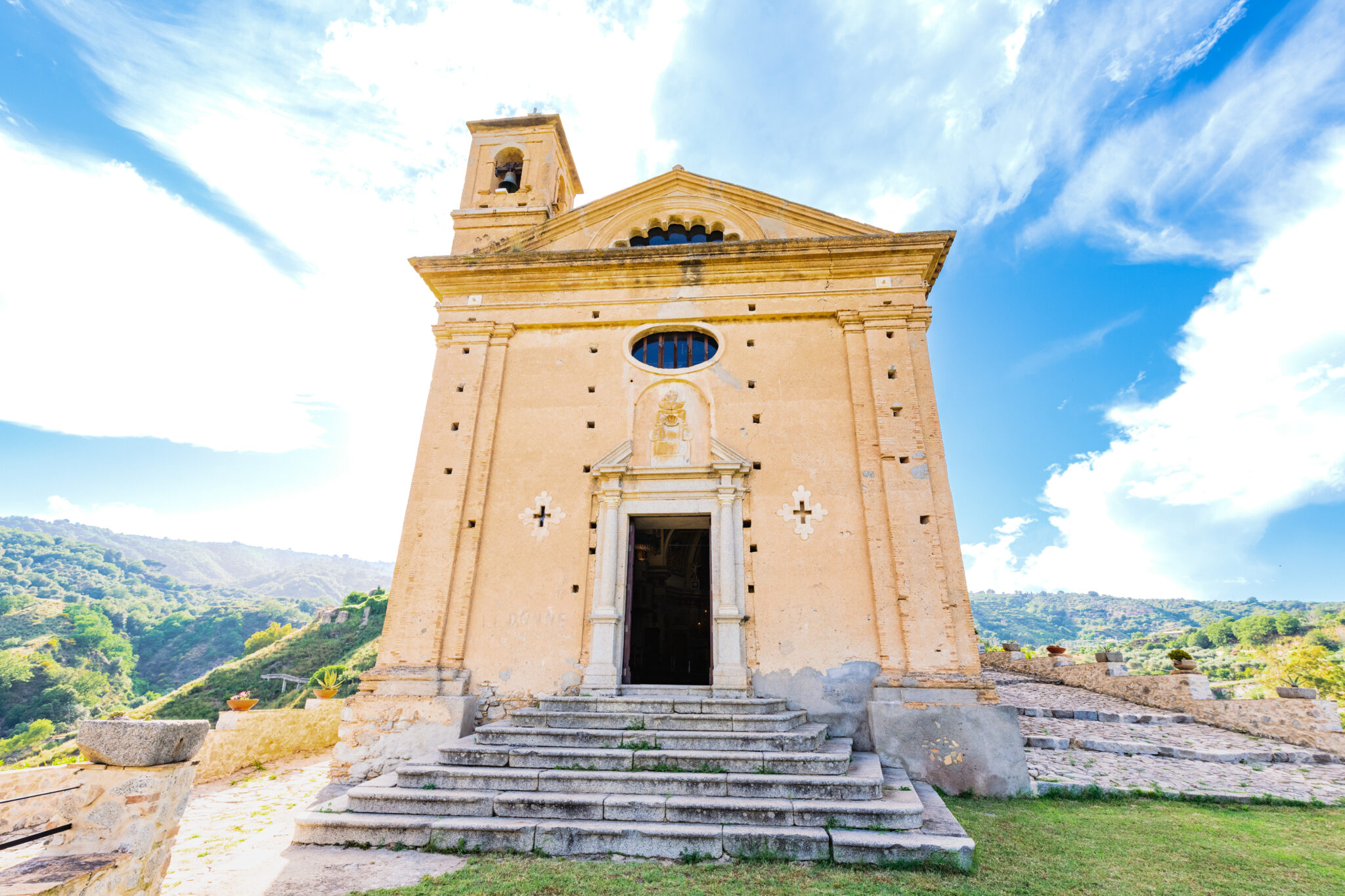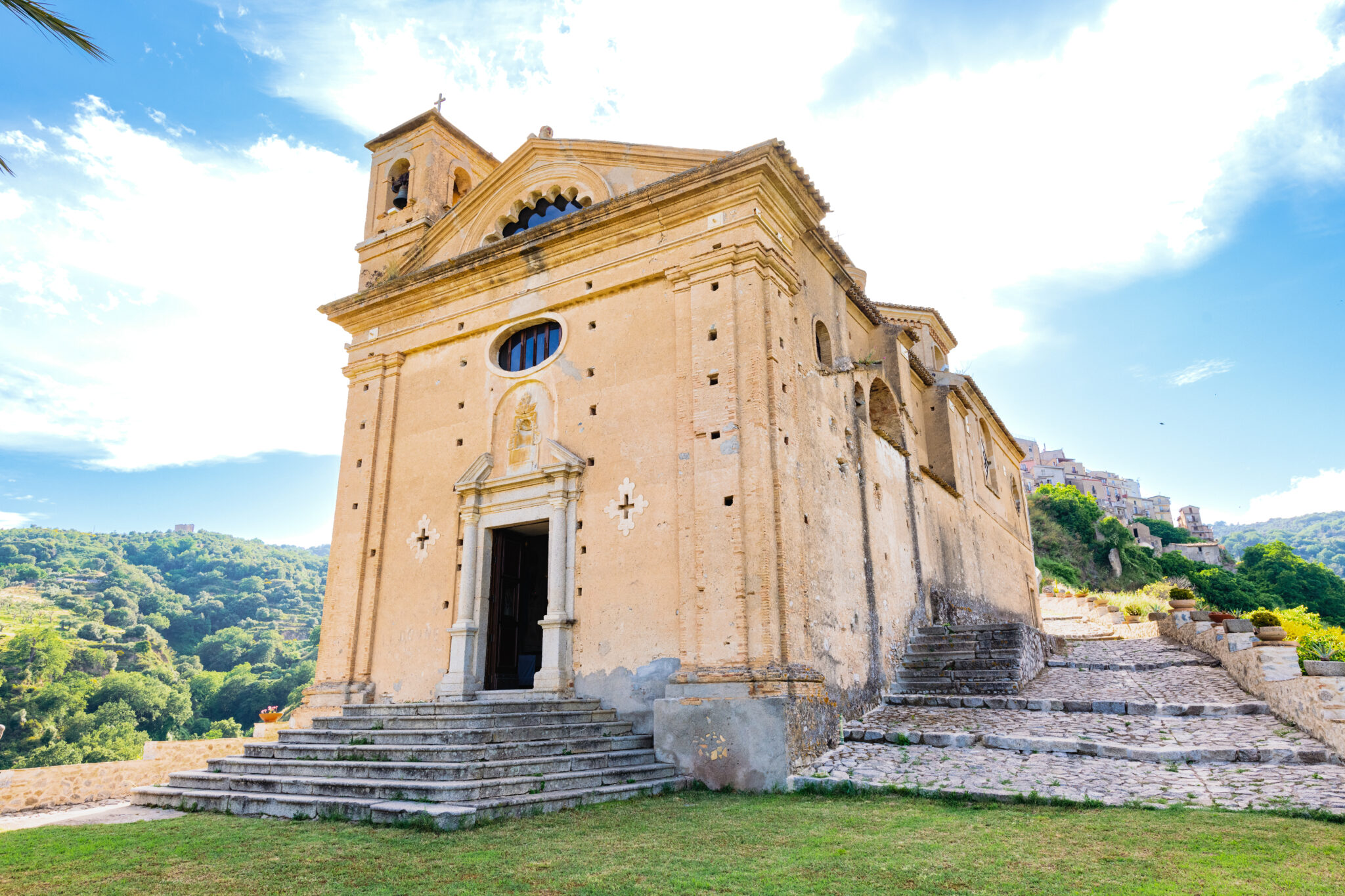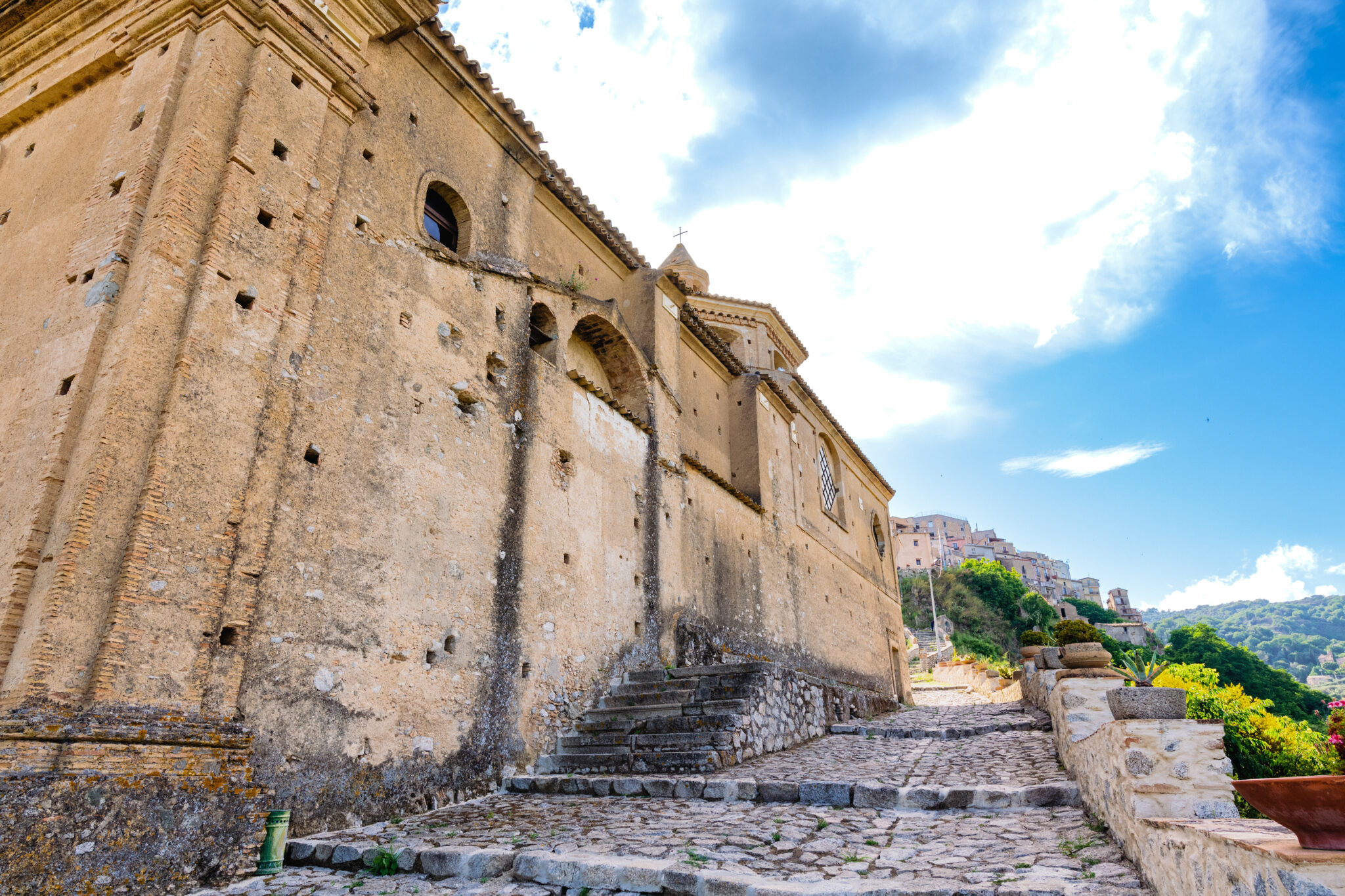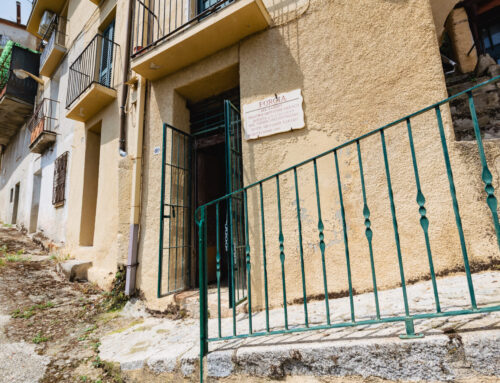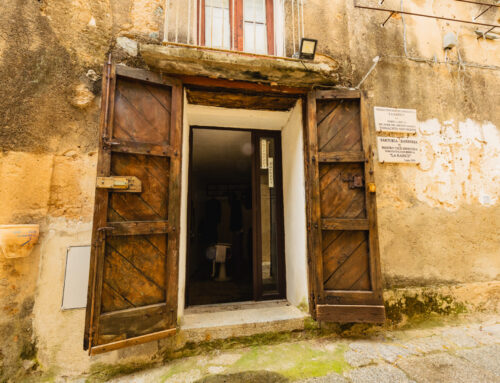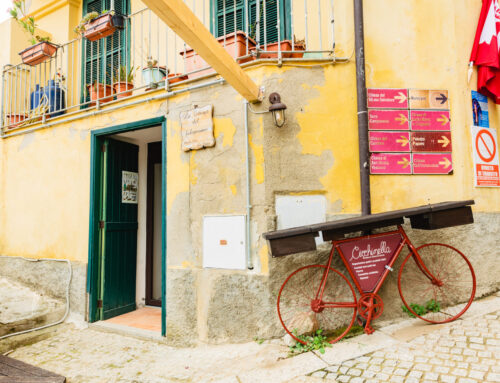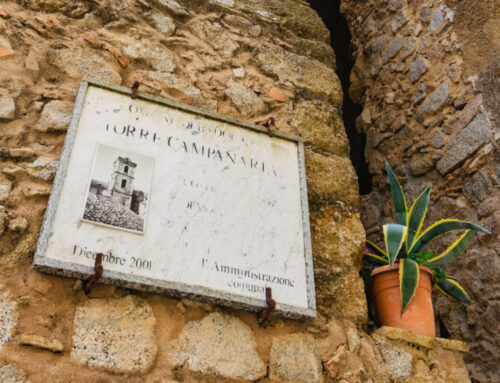The church of the Immaculate Conception was built in 1686 and restored in 1859, according to the inscription in the niche above the portal, the work of stonemasons from Serra San Bruno.
Inside, the ceiling is decorated by 19th century artists from Serra. The high altar, in white marble with polychrome decorations, is also the work of artist-decorators from Serra (1909). The painting above the high altar, an oil on canvas, can be attributed to a painter of the Neapolitan school. It depicts the Virgin Mary in glory, with God the Father above and the symbols of praise around her.
On the sides there are marble altars, including one dedicated to Our Lady of the Rescue, a symbol of protection during the cholera outbreak of 1836-37. Also on the walls are the paintings of St. Anthony of Padua (1876), St. Andrew Avellino (1875) and the Crucifixion (1885), all three by Antonio Ceravolo, one of the most expressive Calabrian painters of the 19th century, who worked in Badolato between 1875 and 1885.
On the right wall there is a “painted” cross made up of capital letters. It is the Angelic Cross by Tommaso l’Aquinate. The four invocations contained in it can be read, starting from the “C” in the centre of the cross, going down, up, to the right, to the left and across again, until the last word, which is found at each end of the arms of the cross.
The ceramic panel on the western external wall is attributed to the Squillace ceramics factory (19th century).
The dome and the lantern on top of the church are a splendid example of Badolato art of the 17th century.
The Brotherhood of the Immaculate Conception organises and carries out some of the most important processions of the year: the Procession of the Sorrowful Mysteries on Holy Saturday, the Procession of the Assumption on August 15th and the Procession of the Immaculate Conception on December 8th.


